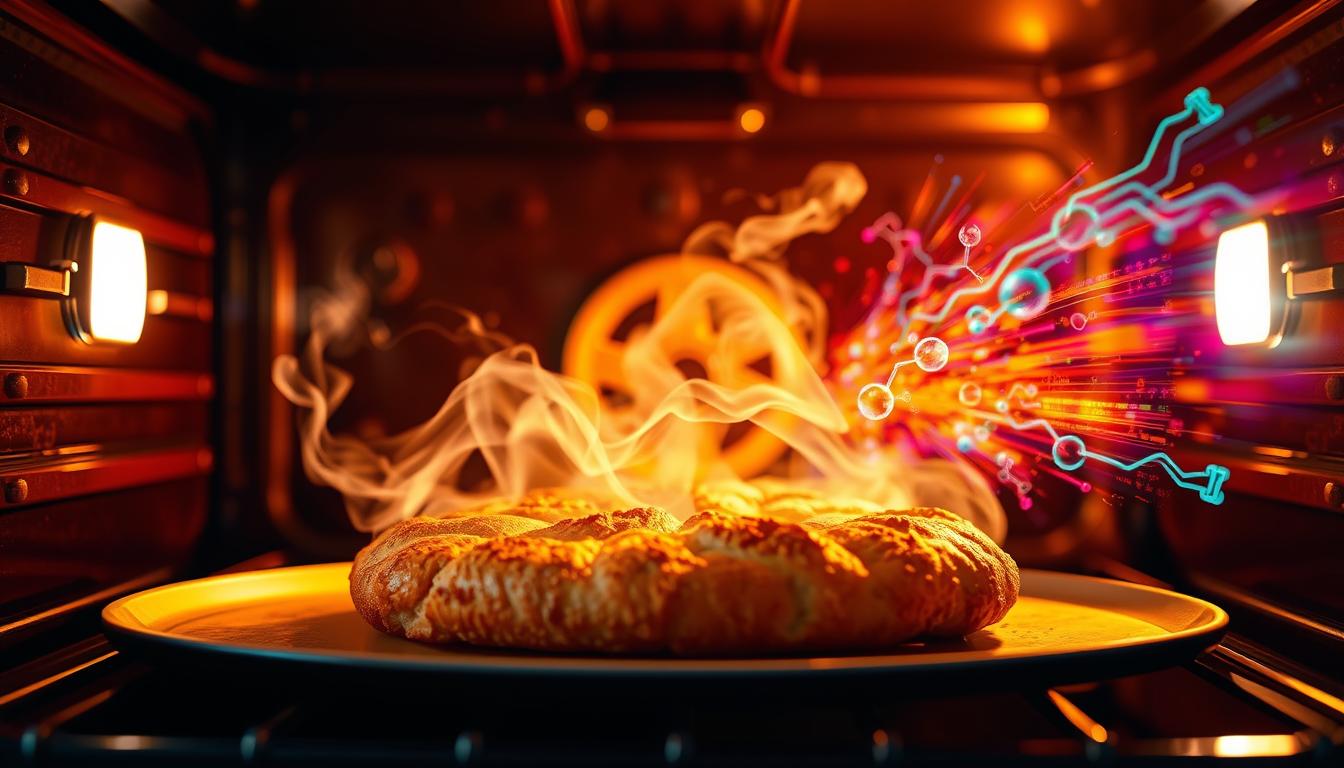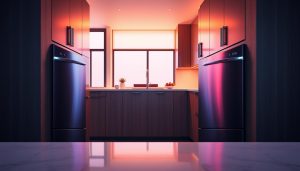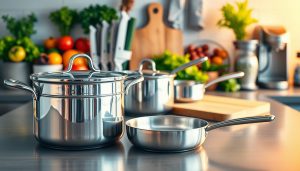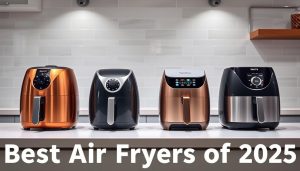Nearly 90% of home cooks struggle to replicate the rich, golden-brown finishes seen in professional kitchens—even when using identical ingredients. This disparity often stems from how heat interacts with food surfaces in enclosed versus open cooking environments.
Baked goods develop their signature color through a combination of radiant heat and controlled airflow. Unlike stovetop methods, where direct contact dominates, ovens surround dishes with consistent temperatures. This allows for gradual browning reactions like the Maillard process and caramelization to occur evenly across all surfaces.
Your gas-powered appliance creates ideal conditions for these transformations. Moisture trapped inside the chamber slows surface drying, giving sugars and proteins time to react. Meanwhile, stovetop cooking often exposes food to rapid temperature fluctuations, leading to uneven results.
Mastering these principles lets you manipulate textures and flavors intentionally. Whether achieving crisp pastry crusts or savory roasted vegetables, understanding your equipment’s thermal behavior becomes the key to consistent success.
Key Takeaways
- Enclosed oven environments promote even heat distribution for uniform browning
- Gas appliances maintain steady moisture levels that enhance flavor development
- Baking relies on radiant heat rather than direct contact cooking
- Extended cooking durations allow complex chemical reactions to occur
- Temperature control directly impacts caramelization and Maillard processes
Understanding the Science of Browning
Your kitchen becomes a laboratory when heat meets ingredients. Chemical transformations create those coveted golden hues and complex flavors through precise thermal interactions. At the heart of this phenomenon lies a reaction discovered over a century ago.

The Role of the Maillard Reaction
French chemist Louis-Camille Maillard uncovered the fundamental process behind food coloration in 1912. When proteins and sugars reach 280-330°F, they undergo molecular changes producing hundreds of new flavor compounds. This explains why toasted bread develops nutty aromas and roasted meats gain savory depth.
“The Maillard reaction isn’t just browning—it’s flavor alchemy.”
Three factors control this transformation:
- Temperature: Ovens maintain ideal ranges better than stovetops
- Time: Extended exposure allows full development
- Moisture: Dry environments accelerate surface reactions
How Amino Acids and Sugars Contribute to Flavor
Protein-rich foods contain amino acids that bond with caramelizing sugars under heat. Higher sugar content speeds color development—think caramelized onions versus grilled chicken. The science of thermal reactions shows why cookies brown evenly while pan-fried items often scorch.
Key considerations for consistent results:
- Balance surface moisture before cooking
- Monitor oven temperature fluctuations
- Choose cookware that distributes heat evenly
Mastering these principles lets you predict outcomes. Whether roasting vegetables or baking pastry, controlling these variables ensures professional-quality results every time.
Oven Techniques for Perfect Browning
Mastering golden crusts requires strategic heat management. Professional chefs leverage three elements: vertical positioning, surface materials, and air circulation. These factors work together to create ideal conditions for caramelization.

Adjusting Temperature and Heat Distribution
Position dishes in the upper third of your appliance. This placement catches radiant energy from the top heating element. Convection settings boost results by 23% through constant air movement, according to recent culinary studies.
Maintain temperatures between 375°F and 425°F for balanced cooking. Heavy-gauge aluminum sheets outperform thin pans by distributing warmth evenly. Rotate your bakeware halfway through cooking to compensate for hot spots.
Using Reflective Surfaces and Dark Trays
Dark steel pans absorb 40% more thermal energy than shiny alternatives. Place an empty dark tray on the rack above your food to reflect heat downward. This technique works exceptionally well when using a roasting pan for vegetables.
Key strategies for consistent results:
- Preheat sheets before adding dough or proteins
- Space items evenly to allow airflow
- Combine convection fans with upper rack placement
Why Some Foods Brown in the Oven But Not on the Stove
Structural differences between cooking appliances create distinct thermal landscapes. Gas-powered ovens excel at creating layered heat zones that transform surfaces through gradual energy transfer. This environment contrasts sharply with stovetop methods, where direct flame contact dominates.
Comparing Heat Intensity and Heat Source Placement
Your gas appliance’s bottom heating element acts like a thermal engine. Radiant warmth rises through convection currents, enveloping dishes in consistent temperatures. Position items on upper racks to capitalize on this upward energy flow. Dark trays placed above food reflect 18% more infrared waves downward, according to recent kitchen studies.
Stovetop cooking often fails to brown evenly due to localized hotspots. Baking sheets maintain steady contact with doughs and batters, allowing sugars to caramelize without burning. Cookies develop golden undersides through prolonged exposure to preheated metal surfaces—a process stovetops can’t replicate safely.
Practical Steps to Achieve a Brown Top on Baked Goods
Start by positioning dense items like breads on the highest oven rack. Preheat dark-colored pans to 400°F before adding dough. Rotate your bakeware halfway through cooking to ensure uniform exposure. For last-minute crisping, engage the broiler for 90 seconds while monitoring closely.
Three proven techniques for professional results:
- Use heavy-gauge aluminum sheets to prevent warping
- Space items 2 inches apart for optimal airflow
- Brush pastry surfaces with egg wash for accelerated browning
Fat-rich batters benefit from extended cooking times at lower temperatures (325-350°F). This allows rendered fats to interact with sugars gradually, creating complex flavor profiles. Always verify doneness with visual cues before removing items from heat.
Conclusion
Transform your culinary results by mastering the science behind golden surfaces. Ovens create unique conditions where heat distribution and moisture work together to trigger flavor-enhancing reactions. Unlike stovetop methods, enclosed cooking spaces allow sustained temperatures that proteins and sugars need for optimal browning.
Gas appliances offer precise control—strategic rack placement and dark pans maximize infrared energy absorption. These techniques ensure even caramelization, whether preparing baked goods or savory foods. Your understanding of thermal behavior becomes a practical superpower in the kitchen.
The Maillard reaction isn’t just chemistry—it’s your secret tool for creating visually appealing dishes. Pair this knowledge with proper temperature management to elevate everyday cooking. From crusty breads to roasted vegetables, consistent results stem from balancing time, equipment, and ingredient responses.
Apply these principles to troubleshoot common issues. With patience and practice, you’ll achieve professional-quality finishes that make meals memorable. Great cooking blends art and science—now you hold the recipe for both.



